Your daily dose of Product Management Goodness
Want to know more?
We would love to hear your questions and suggestions for topics you would like to see covered in our future blog posts, so don't be shy and get in touch!


Building out the roadmap
Carrying on from the attribute map,
Now we have identified our initial product offer we review our second priority persona and ask the question “What additional user stories need to be developed to build product acceptance with this group?” For example, if a user story required the coffee to be delivered at 85 degrees, a build-on story might request that the coffee machine could keep the coffeeheated to 85 degrees for five minutes post brewing.
We repeat this with lower value personas to build out the attribute map, giving us a view of what we need to initially deliver and how we can increase the reach and value of the product with incremental stories being added along the way.
read more
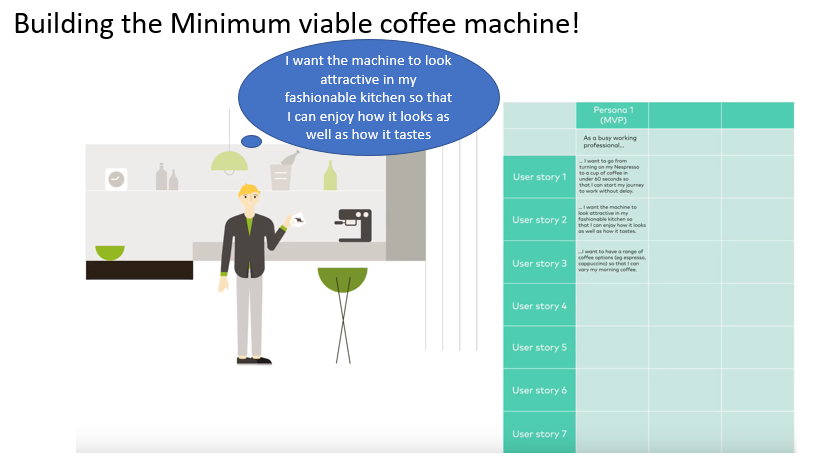
The attribute map
One of the tools we can use to design our MVP and iterations is called an attribute map and we describe our features in terms of user stories. As reminder, a user story is a development requirement that is expressed as follows:
As a
I want to
So that
This example focuses on the Nespresso coffee machine:
• Our target segment is for personal use in the home environment.
• Our primary persona is a busy working professional.
• And our priority feature is making a cup of coffee in less then 60 seconds.
• The user story reads: As a busy working professional I want to go from turning on my Nespresso machine to a cup of coffee in under 60 seconds so that I can start my journey to work without delay.
We then complete all the priority stories for our primary persona.
This gives us a clear view of which features to prioritize.
read more
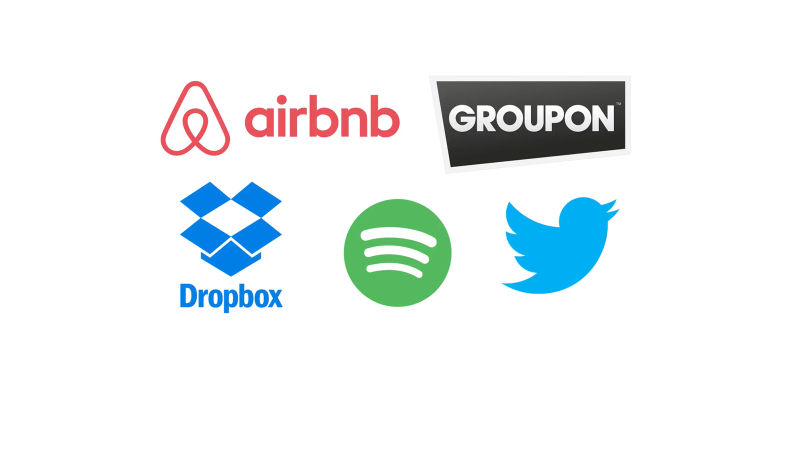
Why do we use it?
Why do we use it?
Building the final product takes a long time and is expensive and high risk.Rather than trying to be all things to all segments at the outset, we use the MVP approach to help us prioritize our development roadmap.
The MVP approach helps us to:
• Identify our addressable market.
• Identify and prioritize our segments.
• Identify and prioritize our personas in that segment.
• Identify and prioritize our user stories for our personas.
Careful prioritisation means we can manage the capacity of our development team while still meeting the needs of our customers.
Some recent high-profile success stories include Dropbox, Airbnb, Groupon, Spotify and Twitter.
So before development, we prioritize our markets and then we prioritise our personas, then the features and then we develop user stories so that we can develop our product in a controlled and carefully prioritized sequence.
read more
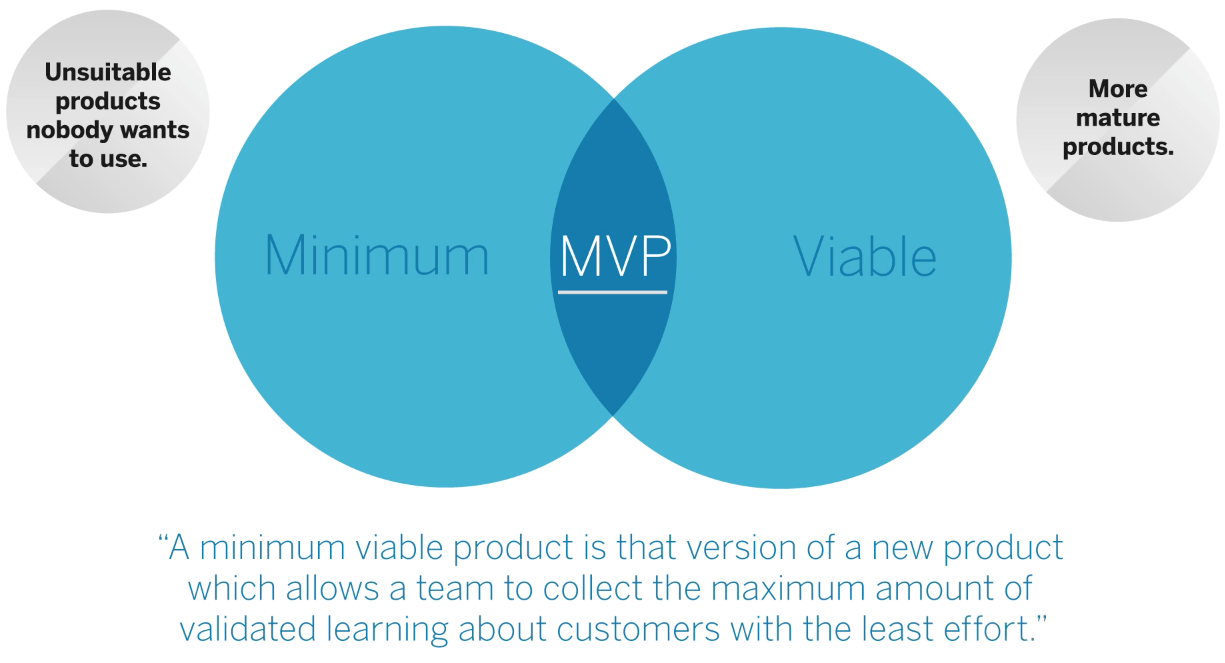
MVP
This week we’re going to explore the minimum viable product, commonly known as the MVP, and how it helps product managers deliver products faster to market with less risk.
MVPs…
• …increase speed to market and generate revenue sooner.
• …reduce risk with a test-and-learn approach.
• …are market and persona-focused.
Eric Ries, author of The Lean Start-up, first used the term, he described it as follows:
“A minimum viable product is that version of a new product which allows a team to collect the maximum amount of validated learning about customers with the least effort.
”Later, more commercially focused, definitions include:
“A minimum viable product is a product with just enough features to satisfy early customers and to provide feedback for future product development.
”To be clear, we define the MVP as a live product that is capable of bringing in revenue because our target group of customers see enough value in the product to pay for it. An MVP is not the finished version, it is an early iteration of our final product that appeals to a small sub-set of our market. An MVP approach has to be supported by rapid iterations and improvements to give our customers confidence that we are working towards a much richer, more mature version.
read more
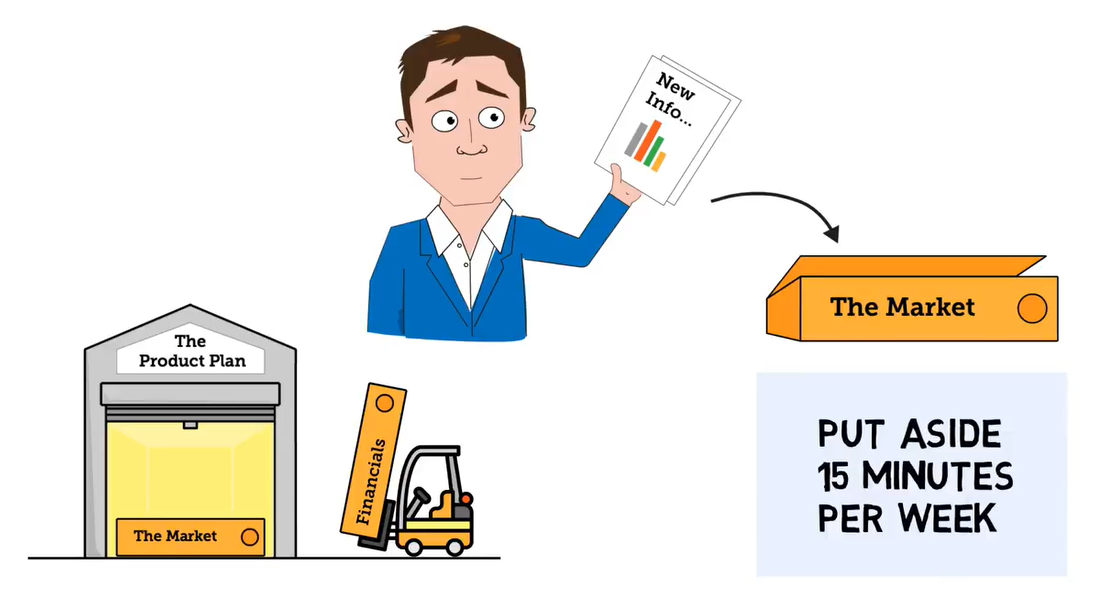
THE CLOSE step 4
And so we approach the end of the presentation. It’s almost identical to the start – restate your major points, what you’d like the team to do next, and thank them for their time.
Nothing guarantees success but using this type of structure irons out a few bumps in the road.
read more
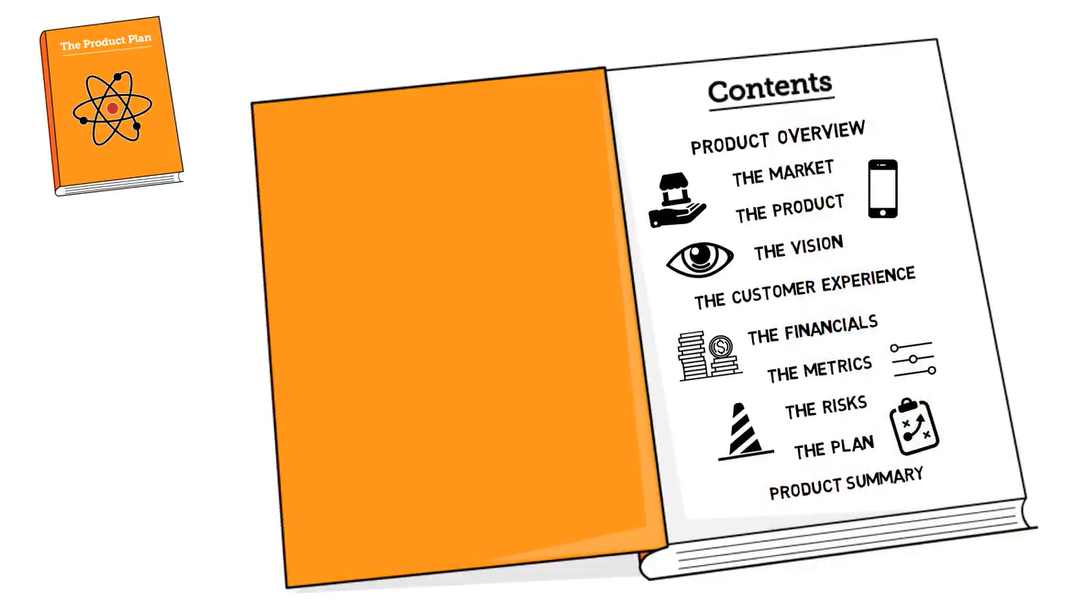
CORE CONTENT Step 3
Product Managers often present complex content. Imagine presenting a Product Plan at a peer review with a 50 slide deck full of 10 point writing. How do you think your audience would respond?
It’s better to adopt a “less is more” approach. If we take the product plan example, a great way to present it is to build the content into an eight slide deck. Each slide has a heading (the section name) one image (a graph, or picture) and three bullet points. You can then present from it rather than read it.
You’ll get questions as you go, some easy to handle others requiring more thought. For those questions, think of using a “parking lot” – a board where we write questions and comments we’ll address after the meeting.
And one other tip – keep an eye on the time. You don’t want to ruin your big finale because the clock beat you!
read more
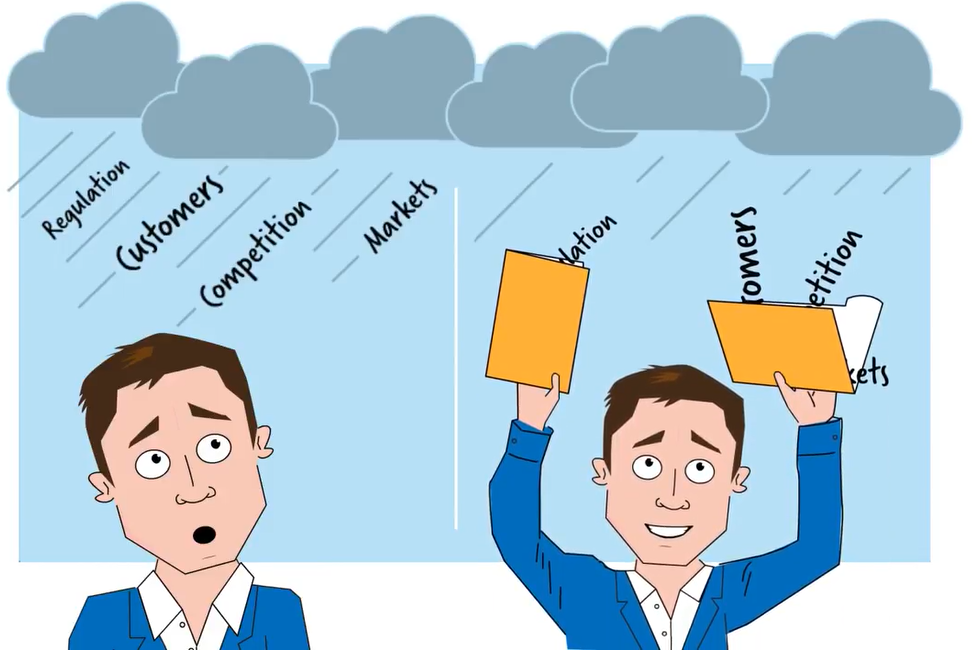
Pick your talking points Step 2
The next major hurdle is the content – what do you want to talk to the team about? We often have complex product ideas to discuss and can quickly get lost as we try and explain them.
So, here’s a simple tip. Pick the three major points you want to talk about and focus on those. It will give your content some structure and direction.
For example, we might say “There’s lots we can talk about around this new product today, but the three major points I want to focus on are:
? Revenue is forecast for $10M by end of year
? New regulation presents a risk
? Two new features promise to lift us above the competition
So you’ve now let the team know why they’re there, what you need them to decide, how long you’ll present for and the major points you’ll cover. We’re under way, now let’s think about the core of the presentation
read more
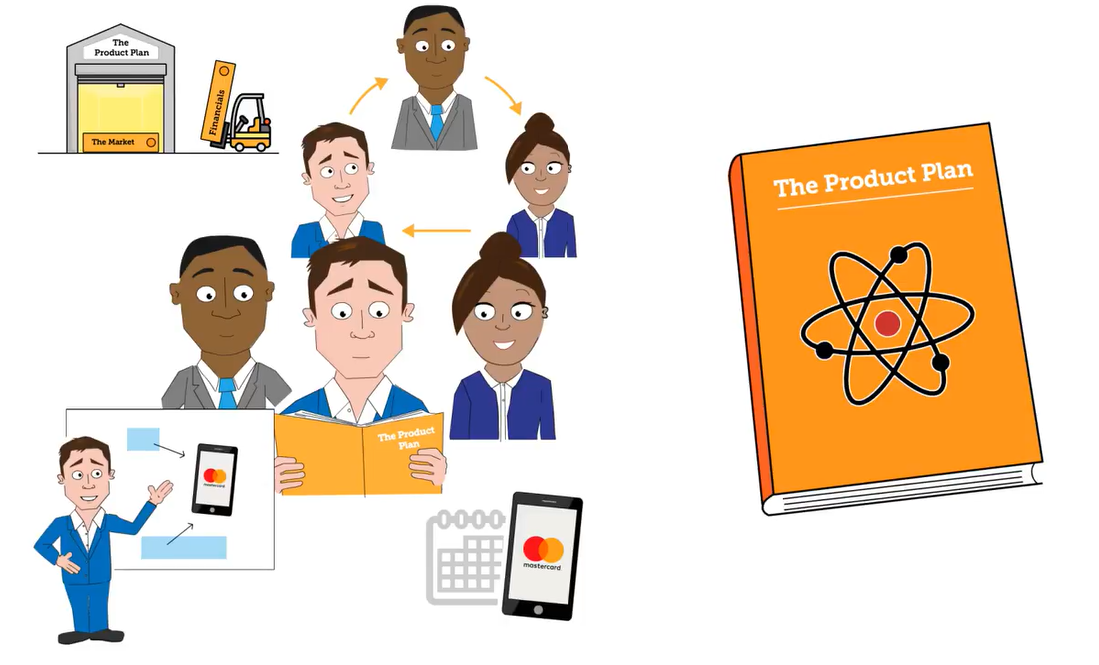
Start with structure Step 1
The foundation to a great product plan presentation is structure; your audience want to know some basics. Think about it from their perspective:
? Why am I here?
? How long will I be here?
? What decisions will I need to make?
So tell them!
We can think of that basic structure as a template we use at the start of any presentation.
For example: “The purpose of this presentation is to discuss a new Product Plan.
We need 15 minutes of your time
We’re looking for you to get on board and help us”
Deliver this well and you’re heading in the right direction.
read more
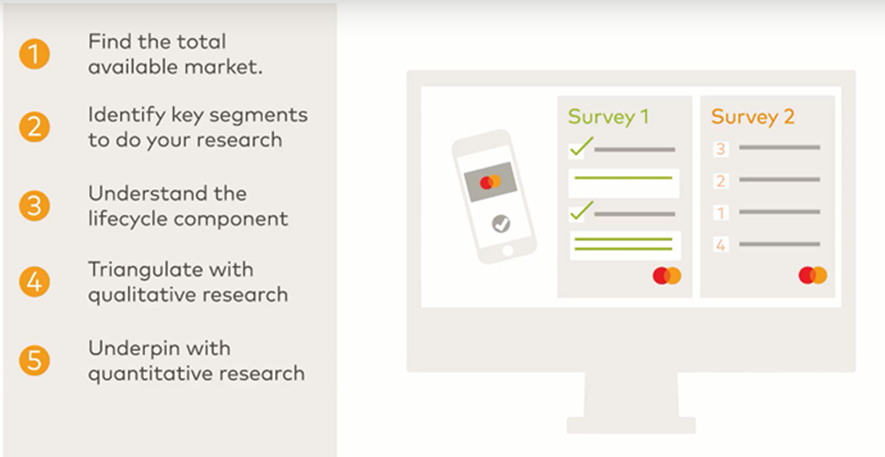
Step 5
Forecasting for a new product or service is challenging when we have no historic or foundation data to work from. In our six step process we’ve so far considered:
Step 1 of 6 Find the total available market
Step 2 of 6 Identify key segments to do your research
Step 3 of 6 Understand the life cycle component
Step 4 of 6 Triangulate with qualitative research
The next step is: Step 5 of 6 Underpin with quantitative research
Test your research findings with surveys. Look for proof points and anomalies – feedback that either supports your qualitative research or challenges it. Essentially, try and get to a point where you can say: “Three client groups said this solution will speed up processing time by 30% and, when surveyed, an additional 200 clients supported these findings.
read more
Check out the Archive